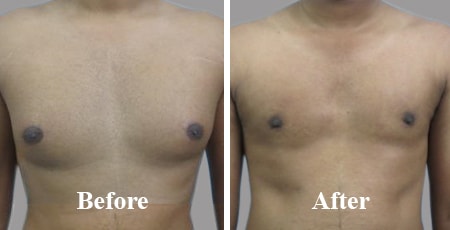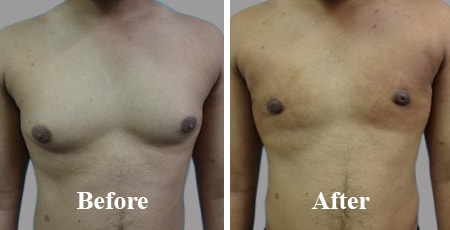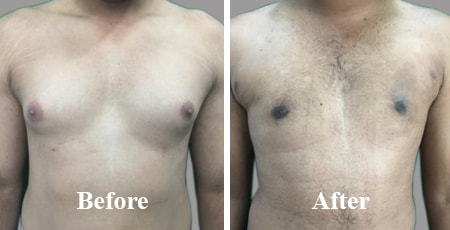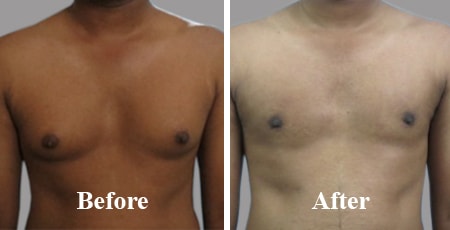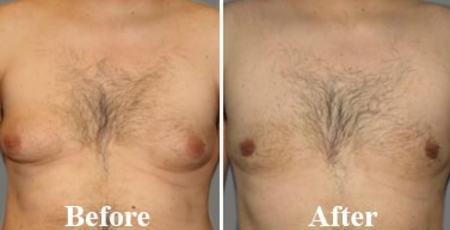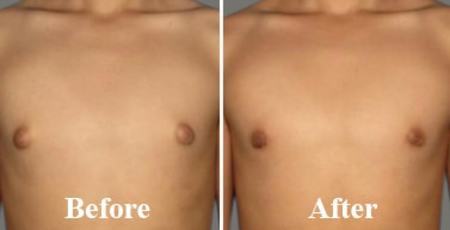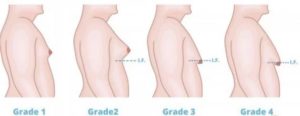Flaunt your Chest not Boobs
Call now & Get Discount: 8329060384
Best Gynecomastia Surgeon in Gurgaon Get Male Breast Reduction & Gland Removal from Best Surgeon!
Gynecomastia Male Breast Reduction Clinic in Gurgaon - Get the best treatment for Enlarged Male Breast, Puffy Nipples in India at very affordable cost. Complete guide on Gynecomastia, Causes, Symptoms, Cure and recovery. Find the best Male Breast Reduction Clinic in Gurgaon.
Call now & Get Discount: 8329060384
Free Consultation, Best Treatment, Lowest Cost, Easy Finance Available, 100% Result
Gynecomastia Surgery Cost in Gurgaon Know the Cost of Male Breast Reduction Surgery, Deals & Offers in Gurgaon
Gynecomastia Cost Depends on?
The cost of Gynecomastia Male Breast Reduction Surgery depends on Surgeon’s Qualification, Operative facilities, Technique of liposuction, Gland excision needed or not, Stay Required or not, Anaesthetist Experience, Type of Compression garment & Post care facilities given to patient.
Please fill the form for exact costing of Surgery in your condition.
Contact Us
We are located all over India, Our clinics are at Delhi, Gurgaon, Noida, Pune, Mumbai, Nagpur, Ahmedabad, Bangalore, Chennai, Hyderabad, Kolkata, Lucknow, Patna, Visakhapatnam and we are coming to more cities.
If you have questions or need additional information, please call:+91 8329060384 or use our Contact Form!
Find detailed information about Gynecomastia Causes, Symtoms, Diagnosis, Gynecomastia Grades, Candidates, Myths, Facts, Faq’s & Male Chest Reduction & Reshaping surgery in Gurgaon. If you are a Doctor from Gurgaon, You can request your profile on our website & If you are Gynecomastia patient you can find doctors, Ask your doubts about Male breast reduction or read the blogs. We have tried to list best Clinics, doctors & surgeons in & near Gurgaon. You can fill the form & submit your contact details to fix your free consultation with one of our affiliate doctors in Gurgaon. To know the approximate cost of Gynecomastia Treatment, click on - http://www.gynecomastiasurgery.co.in/gynecomastia-surgery-cost-financing/.
Gurgaon (officially known as Gurugram) is a city in the Indian state of Haryana and is part of the National Capital Region of India. It is 32 kilometres (20 mi) southwest of New Delhi and 268 km (167 mi) south of Chandigarh, the state capital. Gurugram has become a leading financial and industrial hub with the third-highest per capita income in India. Gurugram is located in Gurgaon district in the Indian state of Haryana and is situated in the southeastern part of the state, and northern part of the country. The city is located on the border with Delhi with New Delhi to its northeast. The major highway that links Gurugram is National Highway 8, the road that runs from Delhi to Mumbai. Gurugram railway station operated by Northern Railway of Indian Railways. There are five stations served by Delhi Metro located on the Yellow Line, which are HUDA City Centre, IFFCO Chowk, MG Road, Sikanderpur and Guru Droncharya. Currently Rapid Metro Gurugram have six stations, connecting Yellow Line of Delhi Metro at Sikandarpur metro station, which are Sikanderpur, Phase 2, Vodafone Belvedere Towers, IndusInd Bank Cyber City, Micormax Moulsari Avenue and Phase 3. Gurugram is served by Indira Gandhi International Airport, though the airport is just outside the city limits and located within the jurisdiction of Delhi near National Highway 8.
The information on this site is intended for general purposes only and is not intended to nor implied to be a substitute for professional medical advice relative to specific medical conditions or questions. The information on this website is not a guide to treatment, and it should not replace seeking medical advice from your physician. We do not warrant the accuracy, completeness, correctness, timeliness or usefulness of any information contained herein. In no event Domain.com be liable to anyone for any decision made or action taken in reliance upon the information provided through this website. The photos on this website are of models & are not intended to represent the results that every patient can expect. Surgical results vary greatly from patient to patient and are not guaranteed.
Tags: gynecomastia surgery in Gurgaon, gynecomastia surgery cost in Gurgaon, gynecomastia treatment in Gurgaon, Gynecomastia Symptoms in Gurgaon, Gynecomastia Causes in Gurgaon, Gynecomastia Before And After Surgery in Gurgaon, Gynecomastia Surgery Near Me in Gurgaon, Treating Gynecomastia Without Surgery, Gynecomastia Removal in Gurgaon, How Much Gynecomastia Surgery in Gurgaon, Gynecomastia Grades in Gurgaon, Gynecomastia Cure in Gurgaon, Gynecomastia Doctors in Gurgaon, Gynecomastia Post Surgery in Gurgaon, Gynecomastia Liposuction in Gurgaon, Gynecomastia Reduction in Gurgaon, Gynecomastia In Children in Gurgaon, Gynecomastia Free Consultation
Gynecomastia is an exaggerated development of the mammary gland in men, which can affect only one breast (unilateral gynecomastia) or both (bilateral gynecomastia). Most often it is associated with excess fat in the breast.
In men, the breast can sometimes develop abnormally, with an increase in the volume of the breast of a fatty nature ( adipomastia , treatable by liposuction ), glandular (gynecomastia) or mixed (adipogynecomastia).
It is quite common during adolescence, especially because of hormonal changes. In this case, it most often goes away spontaneously and does not require intervention.
In the majority of cases, it is idiopathic: no cause is clearly identified. However, it can be linked to taking medication or to a hormonal imbalance (estrogen / androgen balance). In this case, the cause must be identified before a possible intervention can be carried out.
The treatment of gynecomastia offers very good results in terms of breast volume reduction and helps restore a harmonious male figure.
Gynecomastia treatment: objectives
The goals of gynecomastia surgery are to reduce breast size in men and achieve a normal male figure. It is therefore aimed in particular at men complexed by the feminine aspect of their breasts, suffering psychologically and sometimes, physically.
Candidates for gynecomastia surgery
The surgery is for patients who want to correct the excessive development of their breasts and improve their physical proportions.
The increase in breast volume in men can be badly experienced and generate a real complex, but also pain. Gynecomastia surgery makes it possible to regain a harmonious and more masculine silhouette.
Gynecomastia: price and management
The price of gynecomastia surgery varies depending on the act performed, the costs of the anesthesia and hospitalization.
The partial reimbursement of the operation by Social Security can be done provided that the gynecomastia causes psychological / sexual problems, and after having carried out a complete endocrine assessment. Depending on the chosen mutual, there may possibly also be reimbursement for the intervention.
PREOPERATIVE STEPS
Before proceeding with an operation, the cause of gynecomastia should be identified. A complete assessment with questioning, clinical examination, ultrasound and blood test can be used to determine a possible pathological origin (tumor, hormonal insufficiency, Klinefelter syndrome, etc.).
Depending on the cause, treatment may be hormonal or surgical. In the event of idiopathic gynecomastia, where no medical cause could be identified, the treatment consists in removing the excess tissues (liposuction in the event of adipomastia, mastectomy in the event of glandular gynecomastia), in order to restore the anatomy as well as possible. normal male.
Before the operation, the patient should stop smoking 2 months before, in order to avoid any risk of skin necrosis.
COURSE OF GYNECOMASTIA: OPERATION
Hospitalization
As a general rule, the operation for gynecomastia is performed on an outpatient basis, but hospitalization can be extended to 24 or even 48 hours depending on the surgical technique used. For liposuction alone, the discharge is usually done the same day.
Anesthesia
The intervention is most often performed under classic general anesthesia: the patient is completely asleep. However, depending on the procedure, it may be possible to perform a deep local anesthesia in some cases.
Process
The duration of gynecomastia surgery varies. It can take between 1 to 2 hours, depending on the technique used (liposuction, mastectomy, etc.) by the surgeon , and the form of gynecomastia.
As a rule, the practitioner begins the procedure by incising the lower edge of the areola. Then, he can perform the mastectomy from this incision, and remove the mammary gland and excess fat. In addition, he can also perform liposuction to harmonize the whole.
At the end of the operation, the practitioner puts in place a modeling dressing and suction drainage (except in the case of liposuction alone).
GYNECOMASTIA AFTER SURGERY
Operative suites
After the operation for gynecomastia, the patient must wear a compression garment at all times, for 1 to 2 months on average. The threads resolve on their own.
It is advisable not to play sports, nor violent movements, nor to carry heavy loads during 1 month also.
Possible complications
As with any surgical intervention, gynecomastia surgery can cause complications, such as thromboembolic events, infections, or even healing disorders. Fortunately, these complications are rare. However, this should be discussed with the practitioner before the intervention.
GYNECOMASTIA BEFORE AND AFTER: RESULT
The result is immediately after the operation, with better physical comfort thanks to the reduction in breast volume. However, it takes 2 to 3 months to really appreciate the final result, with the disappearance of the edema and retraction of the excess skin.
It is nevertheless possible to encounter certain imperfections in the result, which may require additional treatment or surgical retouching (asymmetry in height or volume, excess skin, cupulation of the areola, etc.).
In all cases, this intervention leaves room for scars, which should be protected from the sun during the first year. Their situations and sizes vary according to the surgical technique used, but also according to the quality and type of the patient's skin. They must nevertheless be rigorously monitored during control consultations.
GYNECOMASTY and ADIPOMASTY
Surgical (male) breast reduction is the most effective treatment for gynecomastia. This cosmetic surgery procedure removes excess fat and glandular breast tissue to restore a flatter, firmer and thus more masculine contour to the male chest.
Definition and origin of gynecomastia
Gynecomastia is defined by an increase in volume (hyperplasia), uni or bilateral of the mammary gland in men . Contrary to popular belief, men actually and physiologically have a mammary gland. Usually idiopathic (without a found cause), and developed during growth, gynecomastia can come from taking certain drugs or from abnormal hormonal production.
In infants, gynecomastia is very common (due to the passage through the placenta of maternal estrogen). Later at puberty, steroidogenesis can lead to the development in adolescents of gynecomastia, frequently a source of deep complex. In men over 50, gynecomastia appears in more than 50% of cases, due to androgen deficiency.
A complete clinical, radiological and hormonal workup is necessary in order to rule out a possible cause, especially in recent cases.
Hypertrophy of the breast in men can be essentially fatty, we then speak of adipomastia . Its treatment will most often consist of liposuction alone of the breast in men.
Who is male breast reduction surgery for?
Any hypertrophy of the mammary gland (isolated gynecomastia) or of the mammary fat (adipomastia) or of the 2 (one speaks then of adipo-gynecomastia ), giving an aspect of “big breasts” for a man, and experienced as embarrassing psychologically and / or painful on palpation, should lead to consultation for surgical correction.
We will compare the turgor of the areola and the nipple linked to a very central hypertrophy of the gland, the treatment of which is surgical with direct access.
We will have removed beforehand:
- too young subjects during growth
- overweight men who will first be prescribed a slimming cure
- all hormonal or tumor causes responsible for gynecomastia
- any medication, hormonal supplement or drugs responsible for hypertrophy of the male breast
What are the possible interventions to reduce breast size in men?
The basic surgical procedures proposed for the reduction of adipomastia and / or gynecomastia:
- the liposuction of the chest in men with incisions of 3 mm around the treated areas
- direct surgical reduction, simple subcutaneous excision of the excess mammary gland, made by a scar around the lower half of the areola (stage 2)
- skin remodeling with enlarged scars allowing reduction of breast tissue and resection of excess skin (stage 3)
We can also, as part of a gynecomastia treatment associated with liposuction of other areas (abdomen and hips most often), take advantage of this autologous biological material to give more curve to the pectoral muscles by infiltrating them with its own fat. , lipofilling of the pectoral muscles which will shape the upper part of the torso in particular. This optimizes the balance between the top of the chest, which will be more rounded, and the bottom, which will better fit the contour of the pectoral muscle.
Surgical treatment for gynecomastia offers significant improvements, most often with minimal scarring. This simple procedure still requires a qualified and experienced cosmetic surgeon. It takes a very precise size of the gland and a measured reduction of excess fat and glandular to leave a male breast of harmonious, virile and natural shape.
Cryolipolysis and gynecomastia?
For a long time, the only answer to the complaint of too large a breast in a man was resection surgery with scars. Support by social security was also possible then.
The development of liposuction techniques (liposuction) has made it possible to treat certain cases of adipomastia (predominantly fatty gynecomastia) without scars. Unfortunately this technique remains partially effective, because it does not reduce the mammary gland and does not succeed in removing the fat present inside the glandular excess.
In recent years, Cryolipolysis has been used to treat localized excess fat effectively, without surgery and without stress. This method has proven to be particularly effective in this indication of gynecomastia. The results are stunning in 2 to 3 sessions. Even for small excess breasts in men, it can be offered without almost any contraindication.
What type of anesthesia and what length of hospital stay during a gynecomastia treatment?
Stage 1 and 2: Under local anesthesia potentiated by sedation (diazanalgesia), on an outpatient basis
Stage 2 and 3: Under general anesthesia, with 24 hour hospitalization.
NB: no anesthesia for Cryolipolysis
Prices and management of gynecomastia?
In the context of stage 1 adipomastia, treated by liposuction alone, the intervention is considered aesthetic and the prices are close to those of conventional liposuction.
As part of a reduction with a surgical approach, a base of coverage at the agreed rate is automatic, the price of your gynecomastia being those of the excess fees requested.
What are the postoperative consequences?
They are slightly painful and require a simple, preventive anti-pain treatment, systematically.
Relative rest for 5 days:
- driving prohibited
- minimize any significant arm spreading movement.
Wearing a bolero for 3 weeks
Sport involving the shoulder girdle prohibited for 6 weeks, including weight training.
Thereafter all activities will be authorized without restriction.
Potential early complications are hematoma and infection (very rare).
The distant complications concern the aesthetic result: lack of correction requiring a possible remote retouching of 8 to 12 months minimum and problem of scarring requiring to follow a complementary treatment adapted according to the cases.
Stage 2 gynecomastia: direct breast reduction by areolar scar and pectoral lipofilling
GYNECOMASTY IN PRACTICE:
1. “Before” GYNECOMASTY
- You will have benefited from 2 preoperative consultations and an anesthesia consultation
- A cooling off period of 15 days will have been respected
- Preoperative photos are taken
- Complete medical assessment to rule out all potential etiologies
- Signature of legal documents including detailed information of your intervention, a quote and informed mutual consent
- Order of a compression garment.
2. “During” gynecomastia
- Most often under general anesthesia
- Outpatient or 24-hour hospitalization
- Sometimes a drain is placed
- A compression dressing is made
- Generally absorbable threads are used.
3. “After” gynecomastia
- A rest period of a few days is planned
- You receive a detailed prescription
- Swelling and bruising form and become more pronounced for 48 hours
- An appointment is set at 8 days for control
- You will recover a less swollen appearance with disappearance of bruises in 3 weeks
- Your cosmetic surgeon is available 24 hours a day on his mobile.
4. “At a distance” from gynecomastia
- A sensation of anesthesia in certain areas of the skin or in the areola may be felt for several weeks
- The result will gradually take shape over 3-4 months
- Tissue flexibility will slowly return over several weeks
- Repeated checks during the first year are scheduled
- Your social attitude will be optimized thanks to a boost in self-confidence and a body finally assumed in all circumstances.
In conclusion
Male breast reduction is the consistently effective and lasting treatment for gynecomastia in a patient with a stabilized weight and without responsible treatment. Following this surgery, patients report feeling much more comfortable, especially shirtless (privacy, locker room, beach) for the first time in years and report an increased sense of self-confidence. If you are uncomfortable, embarrassed, self-conscious, or even inhibited by the appearance of your breasts, male breast reduction for your gynecomastia is an option to seriously consider. Scars are minimal for the benefit obtained.
